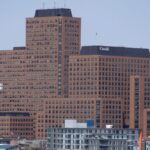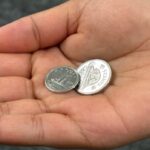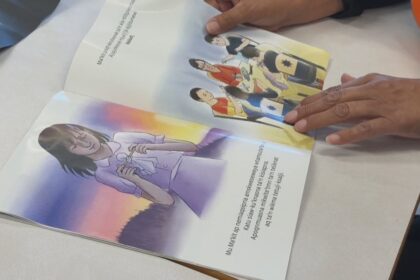Military members, veterans, community leaders, and civilians huddled together in the cold November air to pay their respects at an Indigenous Veterans Day ceremony. Wreaths were laid at the foot of the Carin monument, honouring the Dene, Métis, and Inuvialuit who served from the Great War, Second World War, Korea, Afghanistan and peacekeeping and peace-making operations around the world. The ceremony carried added weight this year, coming a week after the head of Canada’s military formally apologized on Oct. 30 for the Canadian Armed Forces’ history of racist discrimination. For Master Cpl. Tim O’Loan, a proud Dene veteran, said the apology marked a step in his personal healing journey. “I served ten years. It was a tough time. I served from ’83 to ’93 and there was a lot of racism, and it was one of the reasons why I departed,” O’Loan said. “The recent apology I attended was meaningful. I was moved by it and I saw it as a gesture of reconciliation and acknowledgement of the treatment.” O’Loan said it has been an emotional week, his thoughts turning to fallen comrades and Indigenous heroes. “I’ve lost friends and you know I think of heroes like Tommy Prince. I served in his unit; his story was a tragic story,” he reflected. “As we lead up to the 11th, I think about some of the friends that I have lost… I would just like to encourage Canadians; you don’t have to thank them for their service only on Remembrance Day. Thank them prior and after. “Just acknowledge that some veterans can be struggling, and if we can give them grace, that would be helpful.” O’Loan said he sees this moment as an important chapter for the CAF. “What I hope is that this apology that acknowledges the racism… is that they have done everything they can to eliminate racism from the military. I think we have to acknowledge it is still present, but it is nothing like it was when I served.” A visible symbol of remembrance and inclusion was seen on the uniforms of many personnel. This year, the Canadian Armed Forces updated its policy to allow members to wear an Indigenous-designed poppy. “For me, living here in Yellowknife in the subarctic, I wanted to recognize some of the local Indigenous cultures with a sealskin poppy,” said Navy Lt. Nathan Charbonneau, a public affairs officer with Joint Task Force (North). “I believe it is important in everything we do to recognize the people that we work with, whether that is overseas and those cultures that we work with or here at home.” Rebecca Alty, the minister of Crown-Indigenous and Northern Affairs and the MP for the Northwest Territories, shared her reflections at the ceremony. ”Indigenous peoples have historically faced unique challenges, from having to travel far from their communities to enlist to overcoming language barriers and adapting to cultural differences while serving Canada,” Alty said. “Despite this, they demonstrated great courage to overcome these challenges on the front line as skilled sharpshooters and trappers.” Ceremonies like this one also served as a powerful reminder that the work of remembrance is ongoing. More than 80 veterans rest in the Lakeview Cemetery Veterans Fields of Honour, but master of ceremonies and retired Métis veteran Floyd Powder is still working to locate and mark the gravesites of others. “Tonight, I want to speak about Augustin Beaulieu, a Métis veteran from Fort Resolution who served with the Canadian Scottish Regiment during WWII,” Powder told the crowd. Powder said that through his work with the Last Post Fund, he has travelled the territory, working with families and archives to identify forgotten soldiers. Because of his efforts, Beaulieu received a proper headstone two years ago. Now, Beaulieu’s grandchildren honour his legacy at ceremonies like this one. Ensuring these contributions are never forgotten, northern youth played a vital role in commemoration. Local cadets placed lit candles on each headstone, their flickering flames illuminating the names and casting a warm, gentle glow across the entire field. Nicolas Graham, a cadet for four years and a member of the Kátł’odeeche First Nation, found deep meaning in the act. “We currently have the candles on all the headstones. It is a very significant thing to honour Indigenous veterans and veterans in general,” Graham said. “It feels really good, and it is a feeling of recognition… recognizing the sacrifices Indigenous people have made.” As the ceremony concluded, a fresh blanket of snow began to fall, covering the ground in a soft, white layer. In the quiet that followed, the legacy of these Indigenous soldiers, now honoured and remembered, felt assured to live on. Continue Reading
A solemn honour: Paying tribute to northern Indigenous veterans

Leave a Comment











